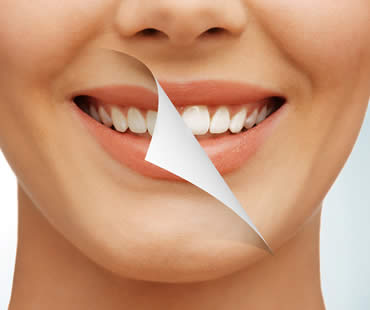
A toothache can ruin your life, at least until you have treatment that relieves the pain. Headaches, mouth pain, or inability to chew can all accompany a tooth problem. It is not unusual for tooth pain to be linked to tooth decay, and when it becomes advanced you just can’t ignore it. This is when root canal therapy is valuable.
What is the procedure?:
Root canal treatment focuses on the pulp cavity, which is the inside of the tooth. When the pulp is infected or inflamed, it needs to be completely removed from the tooth in order for it to heal. It doesn’t matter if the damage to the pulp results from severe decay, tooth fracture, faulty crown, repeated dental procedures, or trauma. Even if the damage isn’t visible or causing unbearable pain, the bottom line is that the interior of the tooth must be cleaned out, disinfected and sealed to prevent future infection. A crown is typically placed on top of the tooth to protect it and complete the procedure.
Why is it necessary?:
If left untreated, an infected pulp can lead to intense pain or spread to other parts of the body. Root canal treatment is the best way to save the tooth and restore its function. Other benefits of the procedure are maintaining the tooth’s natural look, protecting other teeth from excessive wear, restoring normal chewing ability, and allowing normal sensation and biting force.
How long does it take?:
The procedure is more routine than you might think. An experienced dental professional can complete the process is one or two appointments, depending on your specific case. Once the procedure is complete, your repaired tooth should last as long as the rest of your teeth.
If you live in the Ottawa area contact us today

Wisdom teeth are the last adult teeth to erupt into the mouth, generally emerging between the ages of seventeen and twenty-one. They are the third set of molars and are in pairs: two each on the top and bottom arch of teeth. While some patients don’t have wisdom teeth, most do. Many of those who do have them don’t have enough room for those teeth to erupt fully, causing them to be wedged under the back of another tooth, impacted in the gum.
Impacted wisdom teeth are very difficult to clean, and can negatively affect the surrounding teeth. They are highly vulnerable to disease and decay and may lead to tooth pain and damage to adjacent teeth. For these and other reasons, a dentist may recommend that the teeth be extracted through oral surgery as soon as necessary to prevent any problems.
Extraction of wisdom teeth is typically an outpatient procedure done in an oral surgeon’s office. A healthy patient can proceed with a typical surgery, but if any infection is detected, the surgery can’t move forward until the infection is cleared up through the use of a full course of antibiotics. Once the surgery is moving forward, the surgeon’s team will administer some form of anesthesia to numb the area surrounding the tooth or to possibly sedate the patient through IV sedation dentistry.
After the anesthesia has fully taken effect, the surgeon makes an incision to open the gum and to remove any bone that is blocking the tooth from extraction. The tissue connecting the bone to the tooth will be separated and the tooth will be removed. In some cases, the surgeon will have to break the tooth into smaller pieces to make it easier to remove. After thoroughly cleaning the area and removing any remaining debris, the incision will be closed, stitched and packed with sterile cotton gauze to staunch any bleeding.
The surgeon will provide aftercare instructions. Patients should follow these instructions to the letter in order to ensure the best and fastest healing of the surgical site.
If you need a dentist in Ottawa contact us today

If you have damaged or decayed teeth you may be considering options to restore both the look and function of your smile. Crowns and veneers are both utilized by cosmetic dentists to accomplish these goals. Which should you choose? Both crowns and veneers have pros and cons, and some distinct differences.
A crown is a cap that is placed over the tooth to reinforce the tooth and restore its original size and shape. Crowns are bonded into place and cover the entire tooth that is visible above the gum line. Crowns are most often used when the tooth has serious problems with structural integrity, often caused by decay. Cracked, broken, or worn down teeth also get crowns. Crowns modify how the tooth looks, and can help restore a more perfect smile. Crowns can be made of stainless steel, resin, porcelain, ceramic and other metals.
Veneers are similar to crowns in that they are used to restore the appearance of a tooth. Veneers utilize a thin shell of either porcelain or composite material that is placed over the tooth to protect it from damage and correct its appearance. Veneers require the structure of the tooth surface to be altered to bond it to the tooth.
Veneers are most commonly used to restore the outward appearance of a tooth, while crowns are typically used for structural repair. If your goal is simply to change the appearance of your teeth, veneers may be the best option. If you have extensive tooth decay or trauma, a crown might be the best choice. Consult with your dental professional to find out if a crown or veneers would be most appropriate for your specific dental issues.
We look forward to seeing you in our Ottawa dental office

Having an accident that involves your teeth can be one of the scariest types of trauma. It’s not only painful, but brings to mind images of a broken or gapped smile. Unfortunately, reports suggest that over half a million people seek treatment in the emergency room each year for dental related issues. Many emergency rooms are not equipped or trained to handle dental problems, so sometimes all you can do is wait to see your dentist.
Since it’s impossible to know exactly when an accident will happen, it’s a good idea to be prepared with items helpful in a dental emergency. Suggested items to include in a dental emergency kit are gauze, Q-tips, salt packets, a small container, over-the-counter pain medication, and sugarless gum. Also include the phone number for your dentist.
If your mouth is damaged in an accident, first rinse your mouth with warm salt water. Follow the directions on the label to take pain medication if necessary. If inner parts of your tooth like the nerves or dentin have been damaged, try covering the area with sugarless gum to protect it until you can get professional treatment.
Sometimes oral injuries can be handled at home until your dentist is available, but more serious situations require seeking care immediately from an emergency dental facility. Some symptoms that usually suggest immediate treatment include facial swelling that is accompanied by a toothache, or uncontrollable bleeding.
If your tooth is knocked out, find it and rinse it with water. Gently try to replace it in the socket. If it can’t be reinserted, place it in a small container with milk or slightly salty water. Ideally, you need to see your dentist within the first couple of hours in order to restore a dislodged tooth.
Following this advice for emergency dental care will help you handle the situation more calmly and know what to do if it happens to you or someone you are with.
If you live in the Ottawa area contact us today

Magazine articles often say that a smile reveals a person’s personality. If so, you don’t want to have dull, yellow, stained, dingy teeth! Instead you want a faultless set of pearly whites that communicates the best things about you, such as good hygiene and a confident air.
To transform your smile from dull to brilliant, teeth whitening is a great option. The field of dentistry has developed a whole array of products and procedures for brightening smiles. For example, patients may choose to completely hide their discolored teeth behind dental veneers. Or, tough stains can be covered up with dental bonding. If you’re looking for methods that simply bring your yellowed teeth back to a more appealing shade of white, there are several teeth whitening techniques to choose from:
- Over-the-counter products are available from your local drugstore including whitening strips, gels, pens, toothpaste, mouth rinses and more. These require consistent use following the directions, and take longer than most other methods. Most products do provide some level of improvement, but not as dramatic as professional methods.
- Home whitening methods are available from your dentist, such as customized trays that you fill with a special bleaching solution to wear at home for a period of time. At-home whitening typically takes several weeks to achieve desired results.
- Professional whitening is performed at the dentist’s office using specialized tools. It is the most effective method and results are visible in only about an hour, due to the highly concentrated bleaching solution and enhancement with ultraviolet light or lasers.
Teeth whitening not only brightens your smile but also can shape your entire personality. A common benefit is increased self-confidence because you no longer feel you need to hide your teeth, but instead you tend to smile and laugh and speak more easily. Feelings of embarrassment about your teeth can affect you in many ways, but a smile that you’re proud of can improve the way you interact with others. Ask your dentist about whitening methods that can help you improve both your smile and your personality.
Schedule your appointment at our Ottawa dental office

After suffering tooth loss for any reason, it’s important to restore your mouth’s function and appearance with restoration options through your dentist. In the past, many patients have gotten dentures for this purpose. Dental implants provide a newer and very popular option. If you already have dentures but aren’t completely satisfied with them, is it possible to change to dental implants instead?
The answer is yes! Of course, you need to consult your dentist to make sure that you are a good candidate for implants. There are a number of reasons that denture wearers might decide that implants are a better solution to their tooth replacement needs. Some patients find dentures to be uncomfortable because they don’t stay in place securely or they irritate the gums. Some find a more permanent remedy to be more appealing than dentures, and implants do provide a long-lasting solution to tooth loss. If patients with dentures don’t like them and aren’t wearing them consistently, they aren’t achieving the goal of restoration.
There are some additional complications that can occur with dentures, making implants more appealing. Trouble speaking and eating is a hazard if the dentures slip, as well as jawbone loss and increased wrinkles. Some patients even alter their diets due to problems eating certain foods. The increased dental hygiene regimen also bothers some patients who are unwilling to do the extra tasks required.
If you dislike your dentures, consider making the switch to dental implants. It might restore your self-confidence as well as your mouth’s function and appearance.
Schedule your appointment at our Ottawa dental office







